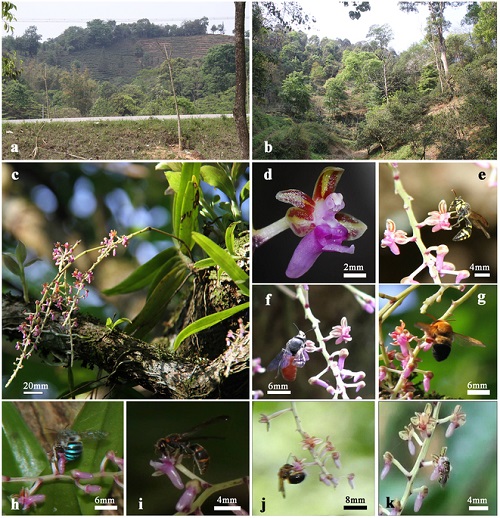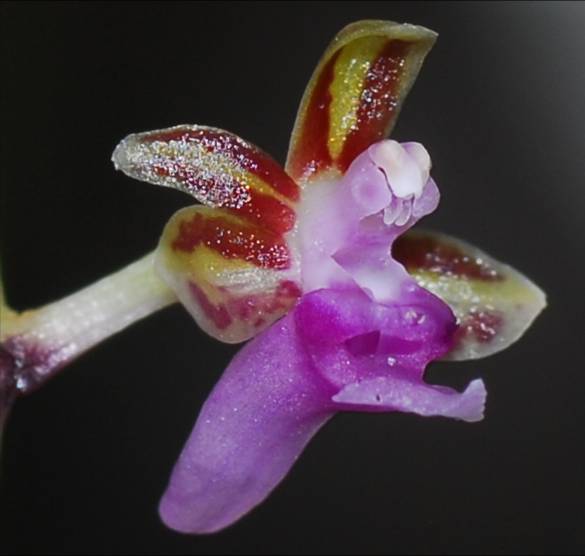Cleisostoma linearilobatum is a small epiphytic orchid widely distributed in Southeast Asia including Xishaungbanna in Southwest China. During the systematic field surveys of orchid species diversity in Xishuangbanna, Prof. GAO Jiangyun and his team of Xishuangbanna Tropical Botanical Garden (XTBG) found that Cleisostoma linearilobatum was the most abundant species in both ‘holy hills’ and traditional tea gardens at elevations between 1000–1600 m. They were curious about why the epiphytic orchid was so successful in different habitats.
To find the reasons, the researchers compared the reproductive ecology of C. linearilobatum in holy hills and traditional tea gardens. They studied the floral phenology and morphology, made hand-pollination experiments and natural fruit sets, and observed floral visitors of C. Linearilobatum. They asked whether the natural fruit set was different between holy hills and traditional tea gardens and whether fruit production remained stable between years. They then observed the pollinators and asked why C. linearilobatum was so successful in Xishuangbanna.
They found that C. Linearilobatum produced many flowers per inflorescence and those flowers had nectar as a reward for pollinators. A total of seven morphologically similar insect species were identified as pollinators of C. linearilobatum in the two study sites. No fruit was found in the bagging and emasculating treatments, which suggested that spontaneous autogamy and apomixis did not occur in C. Linearilobatum. The fruit sets of selfing and crossing treatments were not significantly different, indicating that C. linearilobatum was completely self-compatible. Natural fruit sets were significantly lower than the fruit sets of any selfing and crossing treatments, which were also relatively low, suggesting that fruit production of C. linearilobatum in natural conditions was both pollinator- and resource-limited.
Although the pollinator assemblages and the visiting frequencies of different pollinators were different, the natural fruit sets of C. linearilobatum were stable over the years in both study sites. It may partly explain why C. linearilobatum was so successful in the area.
The study confirmed that in addition to the nature reserves, the ‘holy hills’ and traditional tea gardens in Xishuangbanna also acted as orchid refuges, especially for those species with generalist pollination.
The study entitled “Different pollinator assemblages ensure reproductive success of Cleisostoma linearilobatum (Orchidaceae) in fragmented holy hill forest and traditional tea garden” has been published in Scientific Reports. Contact
Prof. GAO Jiangyun Ph.D
Center for Integrative Conservation, Xishuangbanna Tropical Botanical Garden, Chinese Academy of Sciences, Mengla, Yunnan 666303, China
Tel: 86 691-8716757
E-mail: gjy@xtbg.org.cn

(a) The holy hill forest (HHF) is fragmented by modern tea monocultures; (b) The traditional tea garden (TTG) with many native shade trees; (c) Inflorescence; (d) Flower; (e)-(k) seven pollinators (Images by ZHOU Xiang) 
Flower of Cleisostoma linearilobatum (Image by ZHOU Xiang) |


